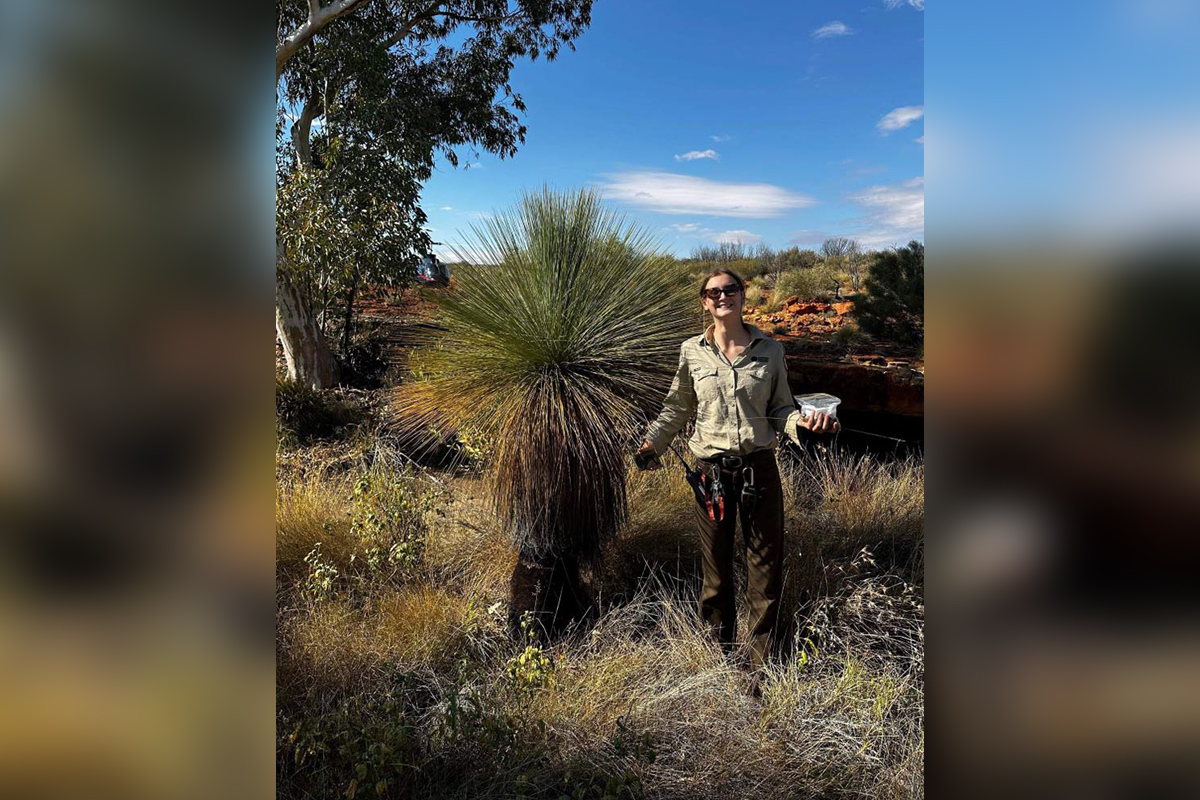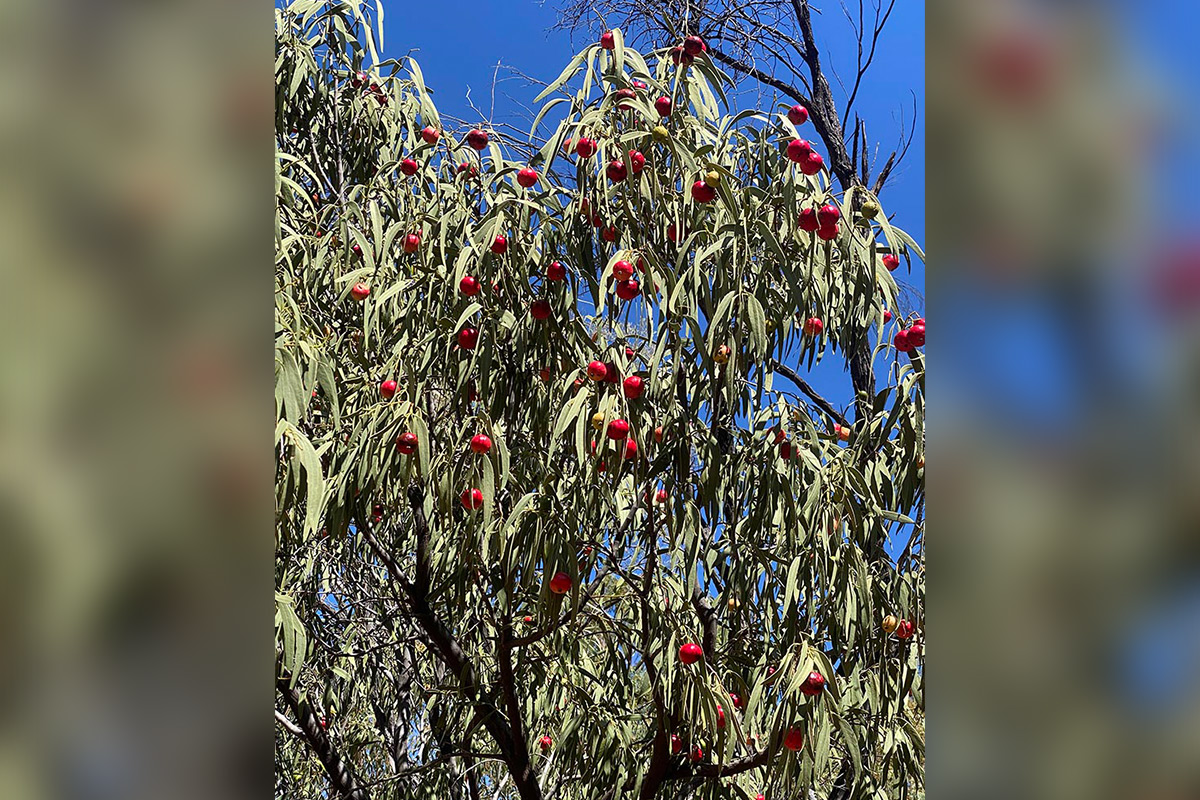Protecting quandongs and grass trees at Watarrka National Park
The department’s Special Pest Management Projects scheme gives endangered flora some breathing room at Watarrka National Park.
Buffel grass (Cenchrus ciliaris) is a threat to native flora species at Watarrka National Park, 450km south-west of Alice Springs (Mparntwe).
The introduced grass wreaks havoc on traditional fire regimes by burning more intensely and damaging other nearby plants, amongst other things.
Two such plants at risk are quandongs (Santalum acuminatum), or Mangata in Pitjantjatjara language, and grass trees (Xanthorrhoea thorntonii). Both are found on the George Gill Range, in Matutjara Country, and are quite hard to reach on foot.
Getting to the upper Kathleen Creek catchment areas involves a steep hike up the escarpment followed by manoeuvring through rocky and uneven terrain: not the ideal place to be carrying a 15L spraying backpack filled with herbicide!
Thankfully, Watarrka National Park secured some strategic project funding which allowed for the use of helicopters to ferry staff and equipment to and from location where the target species were found.
Brushcutters, weed spraying equipment, as well as staff and consulting local Traditional Owners were able to save their energy for effective weed management on site at record speed. 41 quandongs were located, marked on the GPS and protected, and a healthy population of grass trees was identified towards Back Canyon, ready for next year’s program.
Some seeds were also collected by the team to propagate at the Ranger Station for future planting.
The project was so successful that it has been renewed for another year to allow for the continued monitoring and protection of these two iconic species of the outback.


